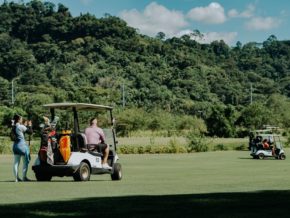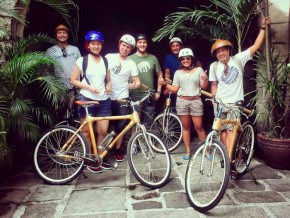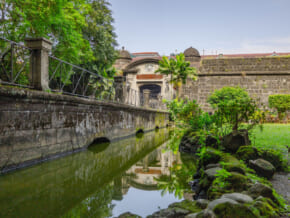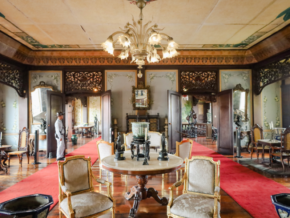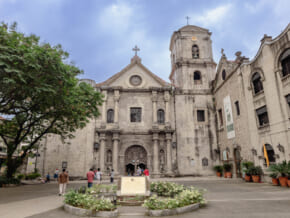VIGAN TRAVEL: Ruby Jar Factory, Vigan’s 90 Year Old Craft of Earthen Jars
Vigan is a place where long-lived arts and crafts are nurtured up to the present time, and among those lasting craft heritage is the pottery making, also locally known as the burnay jars.
Ruby Jar Factory has been a destination for most tourists visiting Vigan City who wants to see and experience the art of pottery for many years now. It is owned by Fidel Antiporda Go, a National Folk Artist. His Chinese descendants were the first ones to establish the industry of clay jar pottery in town, thus its village name, Pagburnayan.

Established in 1922, its origin goes way back to the pre-colonial era when Chinese immigrants learned about the abundant source of clay in the lands of Vigan, and settled to start the industry of pagbuburnay or jar making.
The materials for burnay jars only consists of clay, water, and sand. Its process starts with kneading of clay to warm it up and remove sharp objects that may ruin the clay.
Once it is ready to be molded on the wheel and kiln, it will be tempered with sand to prevent the clay from sticking to the surface of the table. The jar will be air dried for three long weeks to harden, after which, it will be put in a furnace to cook for one day and one night at 1,370 or 1,500 degrees centigrade.
 The potter carefully molds the clay into his desired jar shape
The potter carefully molds the clay into his desired jar shape
 The finished burnay jars are ready for the air-drying process
The finished burnay jars are ready for the air-drying process
 The jars will be put inside the furnace to cook for 1 day and 1 night
The jars will be put inside the furnace to cook for 1 day and 1 night
They produce almost 100 pieces of burnay jars a day depending on its size.
Burnay jars are commonly used for storage of water or grains, as well as for fermenting of Vigan’s local Basi wine and bagoong (fermented fish). It is said that burnay jars are much harder than the typical terracotta pots used in gardening.

Upon entering the factory, the display of clay jars in different sizes and styles will catch your eyes. Demonstrations are sincerely done by potters regularly, and they also allow visitors to try making a clay jar for themselves and take it home as a souvenir for free.

Creating a burnay or clay jar requires tedious effort, skills and years of learning before one can successfully make such earthenware.
Now, this shop is one of the surviving jar factory left in town—perhaps the whole country. This striving industry still continues today, hoping for it to flourish longer and survive to pass on to the future generations.
Also read: ILOCOS SUR TRAVEL: Santa Maria Church Manifests UNESCO World Heritage Baroque Ensemble
How to get here:
- By car: From Calle Crisologo, drive down the Liberation Boulevard. Ruby Jar Pottery is located at the end of Liberation Boulevard and corner of Gomez Street.
- By public transport: You may hail tricycles and horse carriages around Calle Crisologo. Just tell the driver you are headed to Ruby Jar Pottery.
General Information:
Address: Brgy. Pagburnayan, Vigan City, Ilocos Sur
Business Hours: 7 a.m. to 6 p.m. (Mon. to Sun.)
Pottery-making Fee: Trying out pottery making is for FREE! However, visitors are encouraged to place a donation for the potter.
This first appeared in Philippine Primer Japanese magazine’s February 2019 issue.
Written by Deneca Ordinanza





